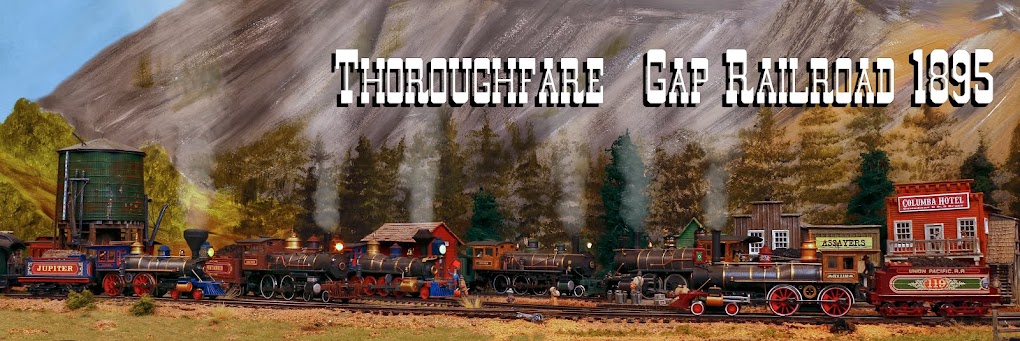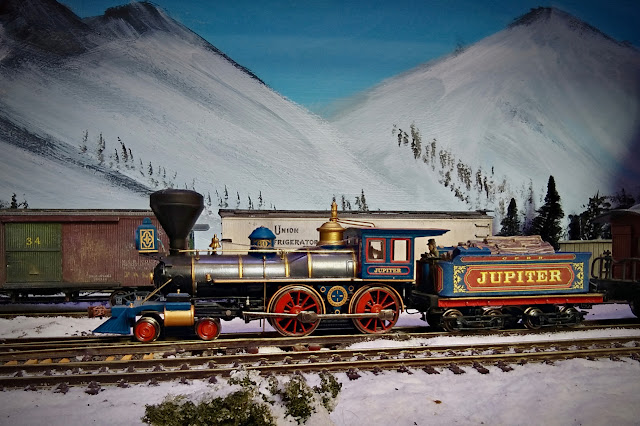I wasn't sure about the best way to model the edge of the turntable pit wall and had thought about printing out a stone or brick pattern and lining the edge with it. But I decided I wanted something with more texture so I tried carving stone work into DAS air dry modelling clay. The results were lacking, but perhaps with some practice, I could make it work. But I tried carving, or rather scoring, some extruded foam. I was quite happy with the look. To paint it, I started by painting individual bricks either grey, raw or burnt sienna or raw number, which looked awful at first. I then dry-brushed white over all the stones, which tied everything together a bit more. But the final black wash toned everything down and gave a cohesive look to the masonry, as well as providing shadows in the mortar lines.
To make the pit rail I began by measuring the length of rail I'd need and cut a piece of flex track half that length, then cut the ties in half, so I had two halves of the pit rail. I slowly bent these to shape by hand and used a steel weight as a jig. I kept checking the curve against a circle drawn with a compass to make sure I had the right profile. Once it was close enough, I glued the rail and ties down and ran wires to the main layout bus.
Then it was a battle of slowly aligning the approach tracks. I worked with one track at a time, leaving a little extra length, that I trimmed once the glue had set. Before I begin the scenery at large, I will paint all the rails and ties.
The turntable is reasonably short for my biggest locomotives like the 4-6-0. Overshoot tracks will be needed opposite all approach tracks and a real-life crew may have fun trying to balance the table with a larger engine. However, I was aiming to depict a turntable that was possibly struggling to keep up with the development in locomotive technology. With new locomotives getting bigger rapidly railroads were constantly having to update infrastructure to cope.
 |
| The painted foam stonework glued in place. |
 |
| The bridge in place. The girders are glued in place. Decking and details to come. |
 |
| An overall view of the turntable and the approach tracks glued down. The two tracks at the left have screws temporarily keeping the track in place while the glue sets. |



